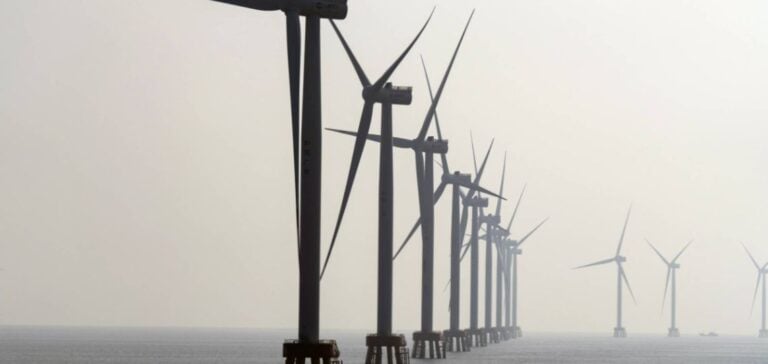BP and Japan’s leading electricity provider JERA have announced the creation of JERA Nex BP, a joint venture designed to become a global leader in offshore wind energy. Based in London, this entity aims to develop a combined offshore wind project portfolio with a net capacity of 13 GW, including operational assets, development projects, and secured leases for future capacities.
With this alliance, BP and JERA consolidate their presence in strategic markets such as Northwest Europe, Japan, and Australia. This joint venture also marks a significant step in their longstanding collaboration, which extends to other sectors such as liquefied natural gas (LNG) and renewable energy.
An ambitious and diversified portfolio
The joint venture will combine approximately 1 GW of net operational capacities, 7.5 GW of development projects, and 4.5 GW of secured leases. Key projects include:
– Morgan and Mona in the UK, with a combined capacity of 1.5 GW.
– Oceanbeat East and Oceanbeat West in Germany, totaling 4.2 GW.
– Projects in Ireland, Japan, and Australia, such as Oriel and Blue Mackerel.
Operational assets, including wind farms in Belgium (Belwind, Nobelwind) and Taiwan (Formosa 1 and 2), will provide a solid foundation for the joint venture. This diversified portfolio will position JERA Nex BP as a key player in the global energy transition.
A structured and disciplined financing model
The financing model reflects a disciplined and efficient approach. Both partners have agreed to invest up to $5.8 billion by 2030 while minimizing their net contributions through revenues generated from asset management and optimization. JERA Nex BP will also benefit from competitive financing and synergies arising from the established relationships of both groups in the global energy supply chain.
BP CEO Murray Auchincloss emphasized the importance of this model: “This joint venture allows us to meet the growing demand for renewable electricity while optimizing returns for our shareholders.”
Governance and collaboration
JERA Nex BP’s governance structure reflects the balanced contributions of both groups. The CEO will be appointed by JERA, while BP will nominate the Chief Financial Officer. Offshore wind teams from both companies will integrate into the joint venture, strengthening its technical and operational expertise.
JERA CEO Yukio Kani stated: “This joint venture demonstrates our commitment to offshore wind, a critical technology to achieve our long-term energy goals.”
A global strategy in a shifting energy landscape
This initiative comes at a time when major energy companies are revisiting their priorities. While BP and Shell reduce investments in renewables to refocus on projects offering immediate financial returns, JERA Nex BP represents an opportunity for long-term growth in a critical sector of the energy transition.
With significant development capacity and a rigorous financing model, JERA Nex BP is well-positioned to capitalize on the global demand for renewable energy while ensuring optimized asset management.






















